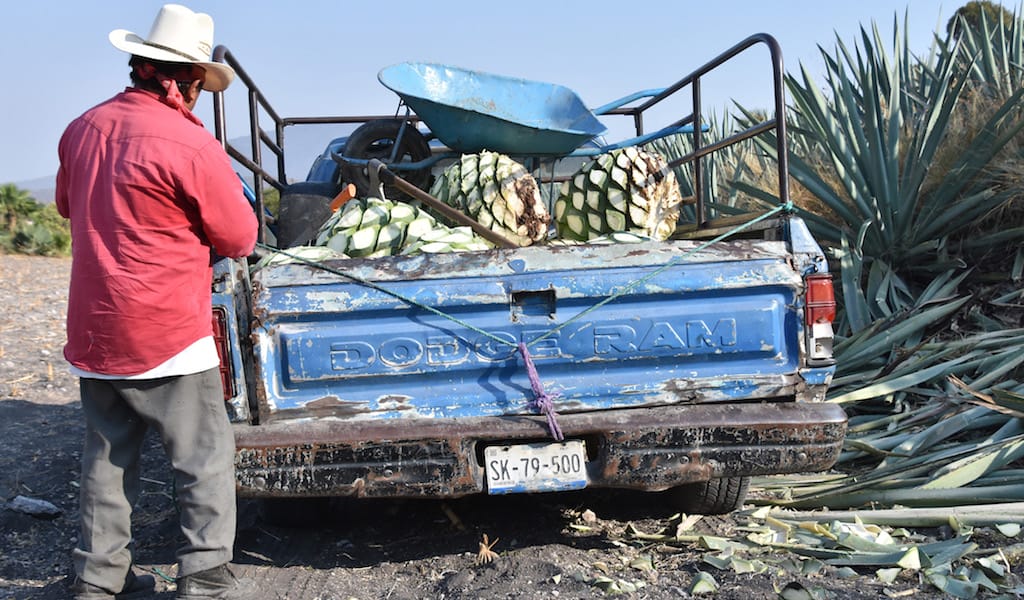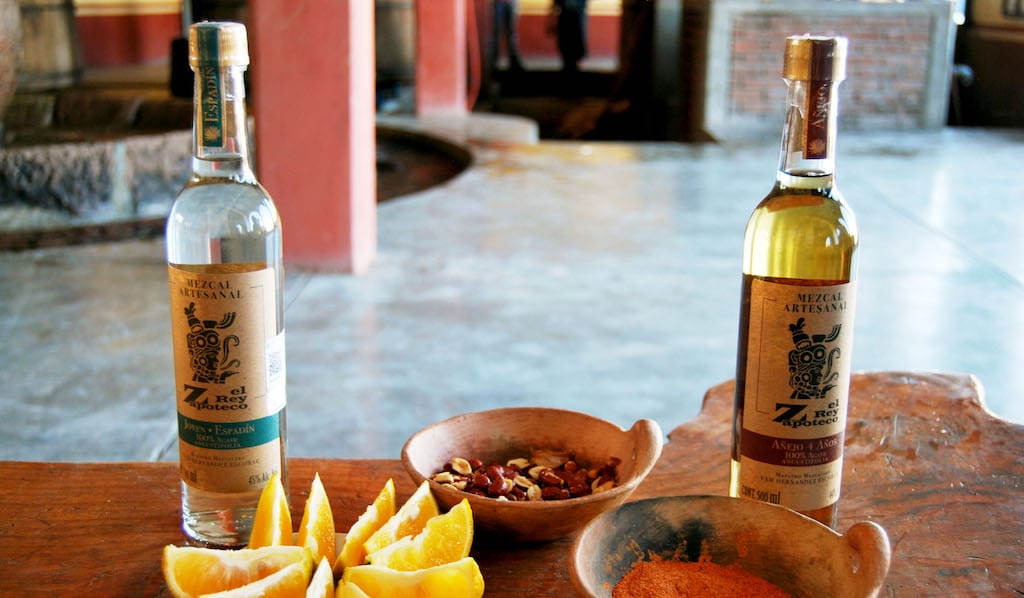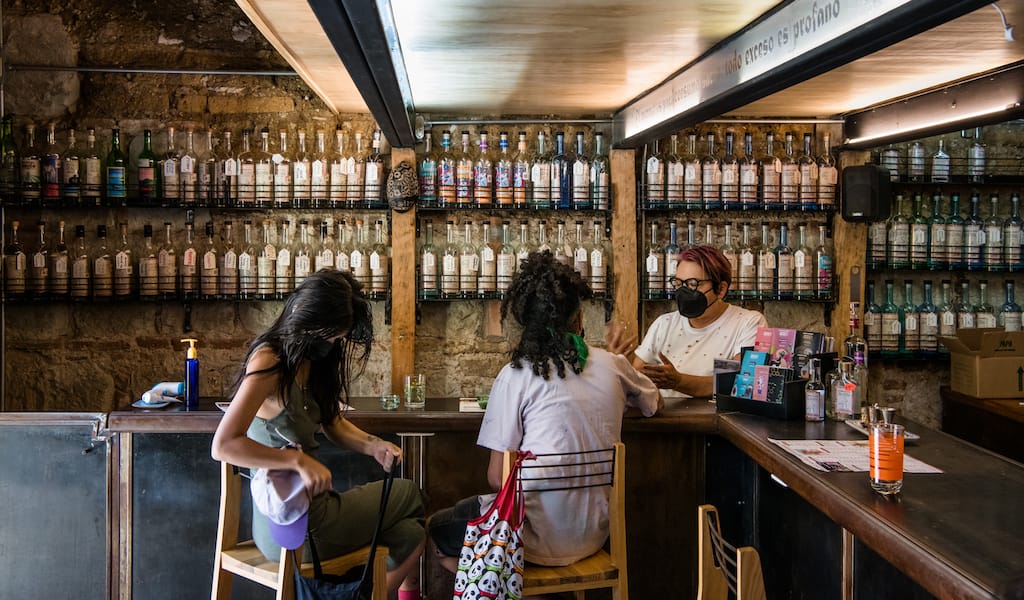San Diego de la Mesa Tochimiltzingo may not be the prettiest pueblo around, but people who know their mezcal certainly know about this town in the state of Puebla. Just three hours southeast of Mexico City, the pueblo is tiny and unprepossessing, tucked into the Atlixco Valley in the Sierra Mixteca. Almost all of its 500 residents work in mezcal.
No one can say for certain when mezcal production started there. When we asked, several mezcaleros (mezcal makers) debated for a while before agreeing it was some time in the 1800s. After more discussion, they finally zeroed in on the year 1864, though how and why they settled on the date remains a mystery. Mezcalero Silvistre Reyes admits, “No one really knows.”
Braulio García Lezama, a maestro mezcalero and the head of the United Producers of Agave Tochimiltzingo cooperative, lives in a rambling two-story house on the pueblo’s main street. The windows and walkway leading to the entrance are lined with fossils he’s unearthed while tending his agave fields – millions of years ago, the area was a wide lake. The front room on the first floor has several gigantic glass containers filled with mezcal waiting to be bottled. Mezcal has been a part of Don Braulio’s life for over 40 years, the knowledge for how to make it passed down through generations. “I learned from my father, who learned from his father, who learned from his,” he says. “All of what we learn is oral, all of it is practice. Since I was young, I thought about becoming a mezcalero.” He figures it takes at least 10 years of training to become a maestro.
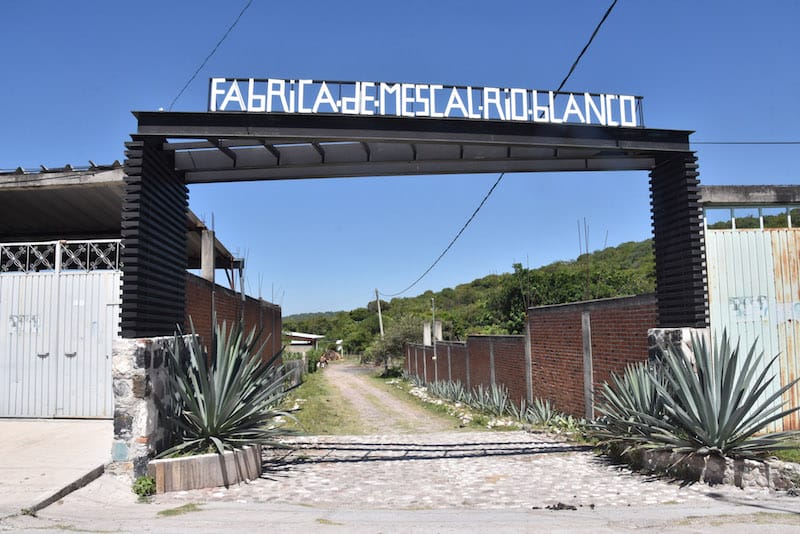
The mezcal made in San Diego de la Mesa is artisanal – small batch, all by hand. The entire process, Don Braulio says, “is done by eye, smell and flavor,” under the direction of maestros. The first step is harvesting the piñas, the agave hearts central to making mezcal. This happens between December and June. Piñas vary greatly in size, but Don Braulio says that’s not what is important. “It is the shape that determines if the piña is ready,” he explains. “A maestro can tell from 100 meters.” The mezcaleros in the pueblo make mezcal from piñas of either espadín or papalometl agave plants, though the latter is considered superior.
Once harvested, the piñas are piled over heated volcanic rocks and covered with dirt and palm mats. A small wooden cross is placed in a hole on top of the pile. “The cross is put on the top to show our belief in God,” Don Braulio says. “To give thanks for the harvest of agave.” The piñas are then cooked for four days, chopped up and placed in large vats with water from a spring that’s fed by snow melt from Popocatépetl, the nearby active volcano. “Agave and water and nothing more,” says Don Silvistre.
The fermentation step, which takes about a week, is complete when a maestro says it is. They take a sip, then spit it out. “The flavor must be both sweet and bitter,” Don Braulio says. “Sour is no good.” The liquid is then distilled twice and here again a maestro’s training will tell him when the alcohol content is right and it’s ready to be bottled.

Across the street from Don Braulio’s house is the small store where the co-op’s mezcal, called Río Blanco (White River) is sold. Their mezcal is super smooth. It warms, rather than burns, the throat on the way down. His niece, Lorena Rosas García, runs the counter and helps customers choose a mezcal by offering samples. Most of what’s on offer is joven – young or unaged mezcal – although, sometimes, a reposado – aged mezcal – is available if the maestros have had time to let it “rest.”
About three years ago, Luz Lucero García, Don Braulio’s daughter, introduced a new line of flavored mezcals, including tamarind, café, jicama, coco, maracuyá (passion fruit) and mango (when it’s in season). It’s sold as Gota de Agave (Drop of Agave) and is smoother than straight mezcal, according to Luz. She explains that she invented the recipes to make mezcal more palatable to those who wish to enjoy the drink but might find it too strong, their women customers in particular. We sampled all six flavors, and though they pack less of a punch than the Río Blanco, they still conjured up a warm, pleasant feeling in the belly.
San Diego de la Mesa Tochimiltzingo may not be the prettiest pueblo around, but people who know their mezcal certainly know about this town.
Luz, like all of Don Braulio’s children, is working alongside her father to learn all she can about making mezcal. “I help in the manufacturing to learn what I need,” she says. “It takes many years, but I know the basics. I want to learn because it is part of my heritage and the only source of work in the pueblo for women.” She hopes to be a maestra mezcalera herself one day. Her father says: “One is a maestro when one does not have to ask questions.”
Like every city and town around the world, Covid-19 made its impact on San Diego de la Mesa. Don Braulio tells us that very few people came to the pueblo to buy mezcal during the first few months of the pandemic, but now the numbers have almost returned to normal. People in the pueblo have come to take stock in the urban legend that mezcal has medicinal effects. “People are using mezcal to protect them from Covid,” Ernesto Hernandez Paéz, another mezcalero, says “They say it kills the virus in the throat. A little in the morning, a little at night.” Don Braulio says that there has only been one case of Covid in the pueblo, and that no one has died of the virus.
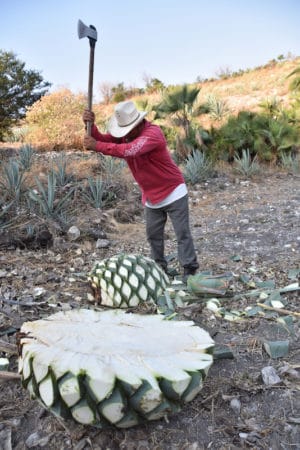
There are no hotels or restaurants in San Diego de la Mesa, so tourists visiting the area usually find lodging and meals in Atlixco, a 30-minute drive away. But there are a few small taquerías and fondas in the pueblo, where a meal will only cost a couple of bucks. Antojitos Irma is a taquería just across the street from the church in the zócalo, town square. Here, Irma serves up a variety of simple but very tasty Mexican staples like quesadillas, tortas and a local favorite called picada, which is basically a large sope. To make it, Irma takes a handful of masa (dough made from ground corn) and pats it into a thick, oblong shape. She then layers on some beans, a bit of queso fresco (fresh cheese) and salsa—either red or green. One should be plenty but they’re so good, two are required. It’s definitely worth a stop.
The road between the Federal Highway in Atlixco (the direction from which most people come) and the pueblo is a narrow, two-lane road with lots of sharp curves. There are no guard rails or street lights and driving from the pueblo at night can be, well, a little unsettling. It’s best to leave before dark. In addition to being safer, a daytime drive heading out from the pueblo offers spectacular views of Popocatépetl and Iztaccíhuatl.
San Diego de la Mesa Tochimiltzingo is one of those small, slightly out of the way pueblos that can easily be overlooked. But one taste of their mezcal will have anyone immediately planning their next return.
Editor’s Note: The population count of San Diego de la Mesa Tochimiltzingo is 500 (not 1,000, as previously published) and the correct spelling of the agave plant is “papalometl.”
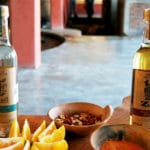 August 3, 2021 El Rey Zapoteco
August 3, 2021 El Rey Zapoteco
“When you like what you do, and you're young, nothing is impossible,” says Doña Juanita […] Posted in Oaxaca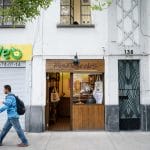 September 16, 2021 Mis Mezcales
September 16, 2021 Mis Mezcales
Has mezcal gone the way of avocado toast, an item that’s become shorthand for cliched […] Posted in Mexico City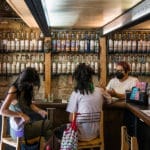 April 2, 2021 Slow Drinking
April 2, 2021 Slow Drinking
Years ago, we were traveling with a friend through Belgium during a particularly cold […] Posted in Oaxaca
Joseph SorrentinoJoseph Sorrentino
Published on September 03, 2021
Related stories
August 3, 2021
Oaxaca“When you like what you do, and you're young, nothing is impossible,” says Doña Juanita Hernandez, one of a handful of female master distillers in Oaxaca, the heart of Mexico’s small-scale mezcal industry. She sits, tiny and relaxed on a wooden bench as we sip mezcal in her distillery, El Rey Zapoteco, in the Oaxacan…
September 16, 2021
Mexico CityHas mezcal gone the way of avocado toast, an item that’s become shorthand for cliched hipster trendiness? If you think yes, a visit to Mis Mezcales in Mexico City’s Colonia Roma may be in order. There, you will find Omar Trejo sitting behind his unassuming makeshift bar, parceling out sips to the uninitiated and reminding…
April 2, 2021
OaxacaYears ago, we were traveling with a friend through Belgium during a particularly cold spring when, after a long day, we decided to warm up at a local bar. We were happy – and a bit surprised – to find that they had a decent selection of Oaxacan mezcales. Filled with yearning for our warm homeland,…







































